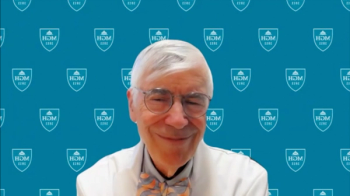
New Biomarkers to Predict Outcomes in TNBC
In a study published in the journal Proceedings of the National Academy of Sciences, researchers found that the protein Myc helps maintain cellular addiction to nutrients, which helps them grow and survive.
Compared to other types of breast cancer, triple negative breast cancers are often more aggressive and have fewer treatment options. In a new study published in the journal Proceedings of the National Academy of Sciences, researchers at Huntsman Cancer Institute and the University of Utah have identified a molecular mechanism that triple negative breast cancer cells use to survive and grow.
According to senior author Don Ayer, PhD, an investigator at Huntsman Cancer Institute and a professor in the Department of Oncological Sciences at the University of Utah, many cancer cells, including triple negative cells, are addicted to the sugar glucose and the amino acid glutamine. "Normal cells do use glucose and glutamine," he said, "but cancer cells use them at a very elevated rate and they actually become addicted to these nutrients and they are required for their growth."
The researchers found that 2 proteins, one called Myc, the other called thirodoxin-interacting protein, or TXNIP, normally work in opposition to each other in cells in culture. Myc helps cancer cells take up and use glucose so they can grow and survive, while TXNIP blocks glucose uptake, limiting the growth-inducing functions of Myc. By contrast, in triple negative breast cancer cells, the researchers discovered that Myc reduces the expression of TXNIP. This increases glucose uptake, which supports the growth-inducing functions of Myc.
Complete article on MedicalXpress:
Newsletter
Stay ahead of policy, cost, and value—subscribe to AJMC for expert insights at the intersection of clinical care and health economics.





























































